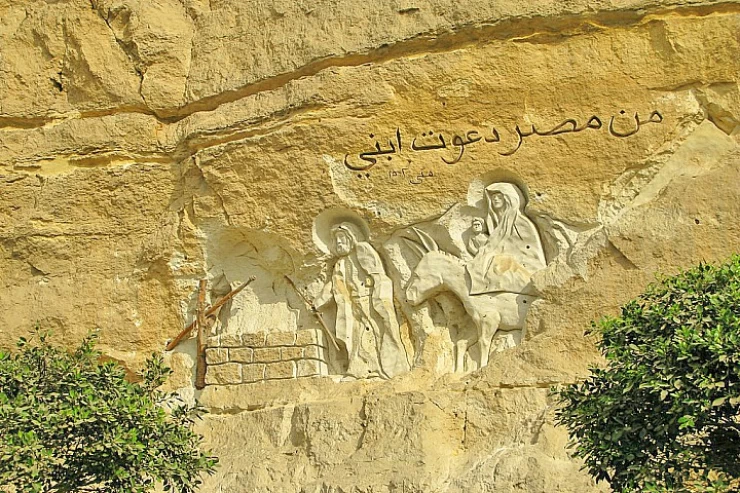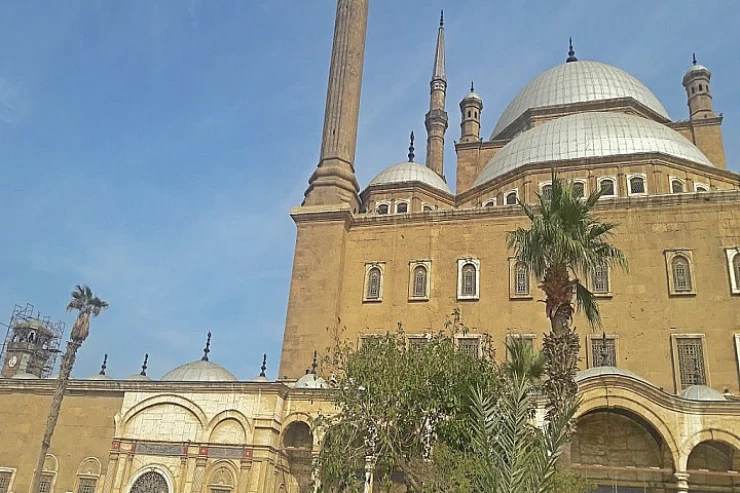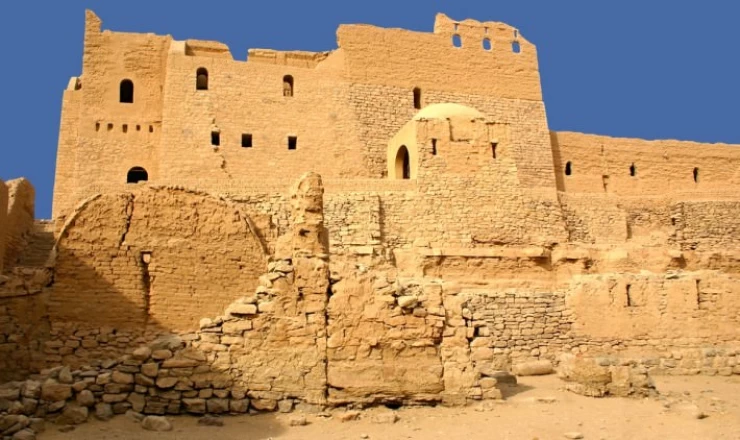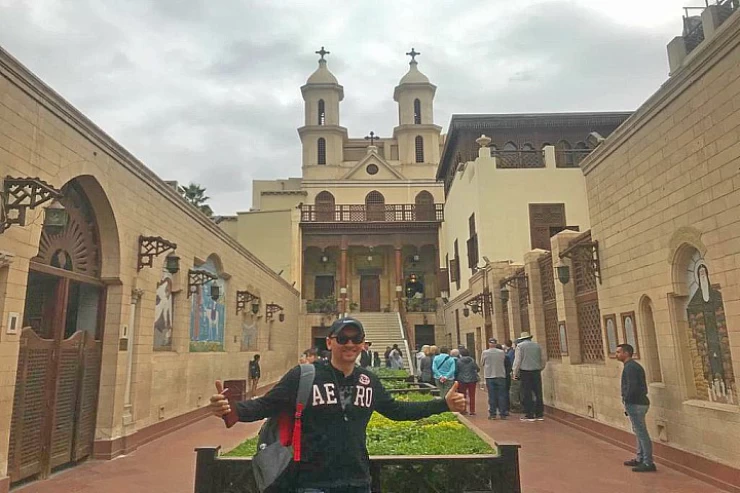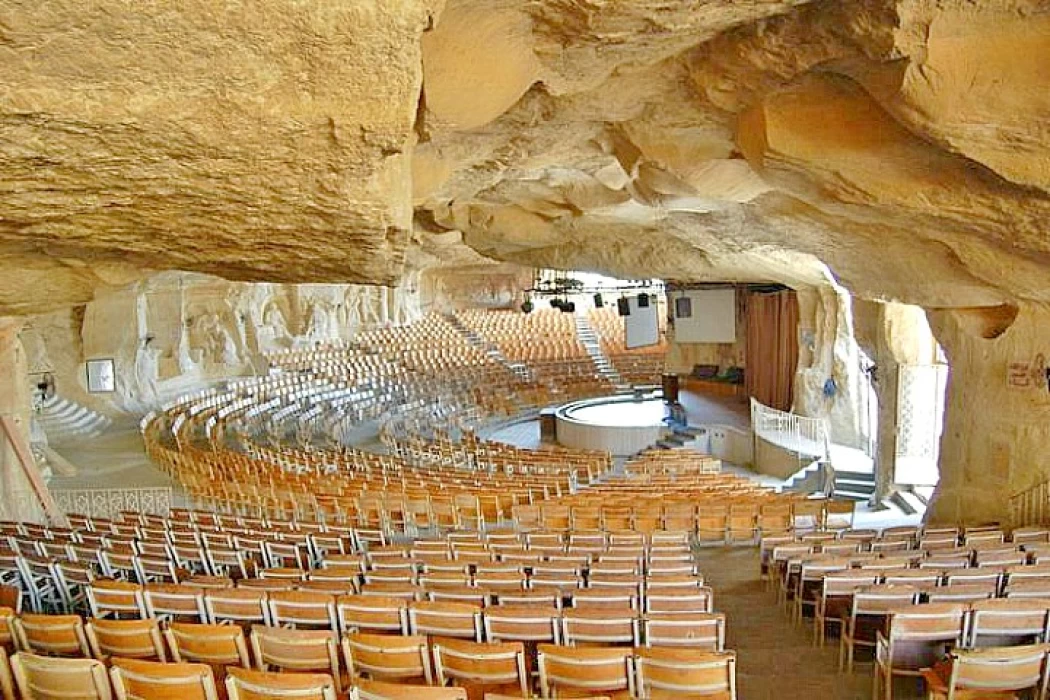
圣西蒙皮匠修道院
坦纳圣西蒙修道院:开罗莫卡塔姆山的一颗隐藏的宝石
其中一个最显着和美丽的历史礼拜场所是圣西蒙坦纳修道院,也被称为洞穴教堂,坐落在开罗多山多石的莫卡塔姆山。 与繁忙拥挤的埃及首都不同,这座美丽的修道院不仅是一个宁静的神圣空间,向那些前来寻求上帝的存在的人开放,而且拥有一个独特的墙壁雕刻成岩石形成教堂结构。 这个地方的历史几乎比古代科普特基督教和奇迹更多。 出于这个原因,无论多么匆忙,对于每个想要探索埃及宗教马赛克的宗教爱好者来说,访问这个地方都是值得的。
历史概述
这座修道院以圣西蒙坦纳的名字命名,他是10世纪的科普特圣人,在法蒂玛哈里发穆伊兹统治期间最着名的奇迹。 根据科普特传统,据说在科普特人统治期间,Al Muiz向科普特正统派最高级领导人教皇亚伯兰提出了一项挑战,要求转移Mokkatam山,以说明基督教是真实的。 经过三天的祈祷和禁食,教皇亚伯兰看到了圣母玛利亚的异象,圣母玛利亚让他去寻找制革者西蒙。 西蒙,一个简单的皮革工匠,与上帝联系很好,当教会聚集在一起祈祷时,有问题的山被升起,从而向Al Muiz展示了基督教。
为了纪念这个奇迹,许多世纪后,莫卡塔姆的大型修道院建筑群是为了纪念圣西蒙和这一重要事件而建造的。 目前,修道院也是埃及基督教历史和该国基督教背景的纪念碑。
地点:开罗隐藏的精神避难所
位于开罗市的圣西蒙坦纳修道院矛盾地相当偏远。 这个修道院位于Mokattam的垃圾城内,其中Zabbaleen是该市的非正式垃圾清洁工。 然而,修道院在动荡中仍然是一个和平的岛屿。 虽然通往修道院的道路蜿蜒穿过几个狭窄,扭曲的核心和充满城市回收活动的低矮建筑,但洞穴教堂巨大的岩石凿成的祭坛的景色简直令人震惊。
修道院内的教堂
圣西蒙坦纳修道院由几座教堂组成,每座教堂都有特殊的兴趣:最着名的和留下最深刻印象的是洞穴教堂,或者更常见的是圣西蒙坦纳教堂。 这个巨大的区域是从山腰凿成的,使其成为整个中东地区最大的教堂,可容纳约20,000人。 洞穴内部充满了来自圣经和圣西蒙生活的宗教形象,绘画和雕塑,这些都是从岩石天花板发出的明亮光线。 在洞穴的上方,有许多裂缝,通过这些裂缝传来阳光。
在大院内,还有其他着名的教堂,如:
圣马可教堂:一座紧凑但同样吸引人的教堂,拥有柔软的石雕和安静的沉思区域,用于祈祷和冥想。
圣博拉教堂:这座教堂也是从岩石上凿出来的,因其平静祥和的内部而受到游客的珍视。
圣母玛利亚教堂和圣西蒙坦纳教堂:在一个较小的教堂里,信徒聚集在那里进行日常的群众和精神服务。
每个教会都体现了不同的精神,拥抱大自然的美丽和精神文化的深度。
建筑奇迹
圣西蒙坦纳修道院的建筑是其最令人叹为观止的特色之一。 教堂和空间不是传统建造的,而是从莫卡塔姆山的岩石中凿出来的。 使用天然的,未经加工的石灰石作为墙壁表面创造了一个崎岖的环境的内部,让客人真正欣赏这个地方的古老历史。 这种风格的建筑也在提高修道院的质量声学特性方面发挥了作用,使科普特礼拜仪式赞美诗和圣歌在巨大的洞穴周围产生了美丽的共鸣。
教堂建筑群的外部景观也很独特。 修道院外围的波纹状场地装饰着高浮雕的雕塑和雕刻,展示了圣经和科普特的文化事件。 这些高高的雕刻是由一位波兰雕塑家完成的,总是层次分明,从而提升了遗址的地位。
Zabbaleen连接
在上个世纪,Zabbaleen是一个组织良好的废物收集者或居住在开罗Mokattam地区的垃圾收集者团体,与圣西蒙坦纳修道院进行了非常积极的互动。 大多数Zabbaleen是科普特人,像埃及的大多数社区一样,他们遭受了社会和经济方面的麻烦。 尽管如此,通过更好地将废物管理和环境服务结合起来,相当一部分人口在垃圾城蓬勃发展。
虽然修道院的目的超越了修道院的物理边界,包含了Zabbaleen,但修道院也为这些人提供了希望和信仰。 一些Zabbaleen协助维护修道院,这个地方在他们的日常活动中作为祈祷和会议场所非常重要。 除了圣西蒙坦纳修道院,参观Zabbaleen的定居点揭示了他们在开罗回收废物的不懈工作的程度。
宗教意义和朝圣
圣西蒙坦纳修道院是科普特基督徒的着名朝圣地,不仅在埃及,而且在世界各地。 许多朝圣者主要来祈祷和冥想圣西门的生活和奇迹。 他们寻求内在的疗愈和神圣的联系. 除了每年11月26日纪念圣西蒙外,教会还定期举行弥撒和其他宗教活动。
参观修道院:期待什么
圣西蒙坦纳修道院是一个地方,无论被一千个活动所包围,人们都能得到安宁和灵性。 令人惊讶的是,繁忙的开罗街道如何过渡到空灵,宁静的修道院设置。 许多游客参观洞穴教堂,并吹嘘看到它的高度和周围切割岩石的美丽。
通往Mokattam的道路位于垃圾城,这可能看起来是一个难以逾越的周边,但并不是那么糟糕。 此外,还有导游,提供有关修道院历史,其与圣西蒙的联系以及Zabbaleen人民的有趣信息。 带上相机,欣赏美丽的岩石景色和值得拍照的艺术木制品。
圣西蒙坦纳的遗产
圣西蒙坦纳的传说在科普特和科普特基督教的叙述和文化中根深蒂固。 他的职业给皮匠西蒙带来了他作为皮匠工作的简单性。 这种简单的信仰生活使他成为众所周知的,但不太可能成为科普特的历史人物。
在圣西蒙的故事的许多有趣的方面是山的移动的奇迹。"正如故事所说,法蒂玛哈里发*穆伊兹代表他与一位官员交谈,并向教皇亚伯兰提出挑战,教皇亚伯兰也是叙利亚教皇亚伯拉罕,在那里他要求一个证明基督教信仰的标志,毫无疑问。 圣西蒙的崇拜被认为已经起伏了莫卡塔姆山,这有助于征服和安抚哈里发,以避免对基督教的追随者哈迪克的不人道待遇,以及对埃及科普特人的大规模屠杀。
这个机会巩固了这位圣人在埃及的宗教神话中,在当代,他的叙述被尊崇为上帝在信徒中行动的力量的体现。 他的记忆不仅在修道院的范围内,而且在埃及和其他地方的许多科普特社区中也是如此。
如果你正在深入探索开罗非凡的宗教和文化多样性,参观圣西蒙坦纳修道院是必要的。 无论您对科普特人,埃及历史的兴趣是什么,或者您是否需要在某个地方找到喘息的机会—这个人迹罕至的网站肯定会有所回报。 精神价值,独特的建筑和对当地Zabbaleen社区的重要性使这个地方非凡而难忘。
对于希望探索比吉萨金字塔或埃及博物馆等宣传良好的景点更多的游客来说,圣西蒙坦纳修道院提供了一个宝贵的机会,可以体验更多该国深入的历史,但往往被忽视的文化遗产。
A Hidden Gem in Cairo's Mokattam Hills .One of the most remarkable and beautiful historical places of worship is the Monastery of Saint Simon the Tanner, also known as the Cave Church, situated in the hilly, rocky Mokattam Hills of Cairo. Unlike the busy and crowded capital city of Egypt, this beautiful monastery does not only serve as a tranquil sacred space open to those who come in to seek the presence of God but rather possesses an exceptional view of walls sculpted into rocks forming the structure of the church. The very history of the place is almost more than ancient Coptic Christianity and the miraculous. For this reason, no matter how much in a hurry one is, a visit to this place is worth it for every religious lover wanting to explore Egypt’s religious mosaic.
The monastery is named after Saint Simon the Tanner, a Coptic saint from the 10th century who is most celebrated for a miracle during the rule of the Fatimid Caliph Al-Muizz. As per the Coptic tradition, it is said that during one of the reigns of the Copts, Al Muiz introduced a challenge to Pope Abram, the most senior leader of the Coptic Orthodoxy, to shift the Mokkatam mountain to illustrate that Christianity is true. After three days spent in prayers and fasting, Pope Abram had a vision of the virgin Mary, who asked him to look for Simon the Tanner. Simon, a simple leather craftsman who was very well connected with God, when the church gathered to pray, the mountain in question was raised, thus demonstrating the Christian religion to Al Muiz.
As a remembrance of this miracle, many centuries later, the large monastery compound in Mokattam was built in recognition of Saint Simon and the important event. At present, the monastery is also a monument to the Christian history of Egypt and the Christian context of the country.
The Monastery of Saint Simon the Tanner, which is located in the city of Cairo, is paradoxically quite remote. This monastery is located within Mokattam’s garbage city, wherein the Zabbaleen, are informal garbage cleaners of the city. The monastery, however, remains an island of peace amidst the turmoil. While the path to the monastery weaves through several narrow, twisting cores and squat buildings teeming with the city’s recycling activity, the view of the Cave Church’s gigantic rock-hewn altar is simply astounding.
The Monastery of Saint Simon the Tanner encloses an ensemble of several churches, each of exceptional interest: The most well-known and the one that leaves the greatest impression is The Cave Church, or, as it is more often referred to, The Church of Saint Simon the Tanner. This colossal area is hewn from the mountainside, making it the biggest church in the entire Middle East that can hold about 20,000 people. The inside of the cave is filled with religious images, paintings, and sculptures from the Holy Bible and the life of Saint Simon, which is all aglow with bright light coming from the rock ceilings. Above the cave, there are numerous cracks through which come rays of sunlight.
Within the compound, there are other notable churches such as:
The Church of Saint Mark: A compact but equally attractive church boasting soft stone carvings and quiet, contemplative areas for prayer and meditation.
The Church of Saint Bola: This church is also hewn from the rock and is cherished by tourists for its calm and peaceful interiors.
The Church of the Virgin Mary and St. Simon the Tanner: A congregation of faithful at a smaller church, where the churchgoers convene for daily masses and spiritual services.
Every church embodies a different spirit and embraces the beauty of nature along with the depth of spiritual culture.
The architecture of the Monastery of Saint Simon the Tanner is one of its most breathtaking features. The churches and spaces are not built conventionally but are hewed out of the rock of the Mokattam Hills. The use of natural, unprocessed limestone as the wall surfaces creates a rugged environment for the interior, allowing the guests to truly appreciate the ancient history of this place. This style of building also plays a part in enhancing the quality acoustic properties of the monastery, enabling the beautiful resonation of the Coptic liturgical hymns and chants all around the huge cave.
The outside view of the church complex is also exceptional. The corrugated grounds at the periphery of the monastery are embellished with high-relief sculptures and carvings that illustrate Biblical and Coptic cultural incidents. These high-stand carvings were done by a Polish sculptor, invariably hierarchy, thereby elevating the station of the site.
The Zabbaleen Connection
Over the last century, the Zabbaleen, a well-organized group of waste collectors or garbage collectors inhabiting the Mokattam region of Cairo, have had a very positive interaction with the Monastery of Saint Simon the Tanner. Most of the Zabbaleen are Copts, and like most communities in Egypt, they have suffered from troubles both social and economic. Nevertheless, a considerable part of this population has thrived in Garbage City through better integration of waste management and environmental services.
Though the purpose of the monastery transcends the physical boundary of the monastery, containing the Zabbaleen as it is, the monastery also offers hope and faith to these people. Some of the Zabbaleen assist in maintaining the monastery, and the place is important in their routine activity as a prayer and a meeting place. In addition to the monastery of Saint Simon the Tanner, a visit to the Zabbaleen's settlement reveals the extent to which their relentless work in recycling waste in Cairo went.
Religious significance and pilgrimage
The Monastery of Saint Simon the Tanner is a well-known place of pilgrimage for Coptic Christians not only in Egypt but also throughout the world. Many pilgrims primarily come to pray and meditate on the life and miracles of St. Simon. They seek inner healing and divine connection. The church also conducts regular services such as mass and other religious activities besides of the memorial services for Saint Simon, who is remembered annually on the 26th day of November.







